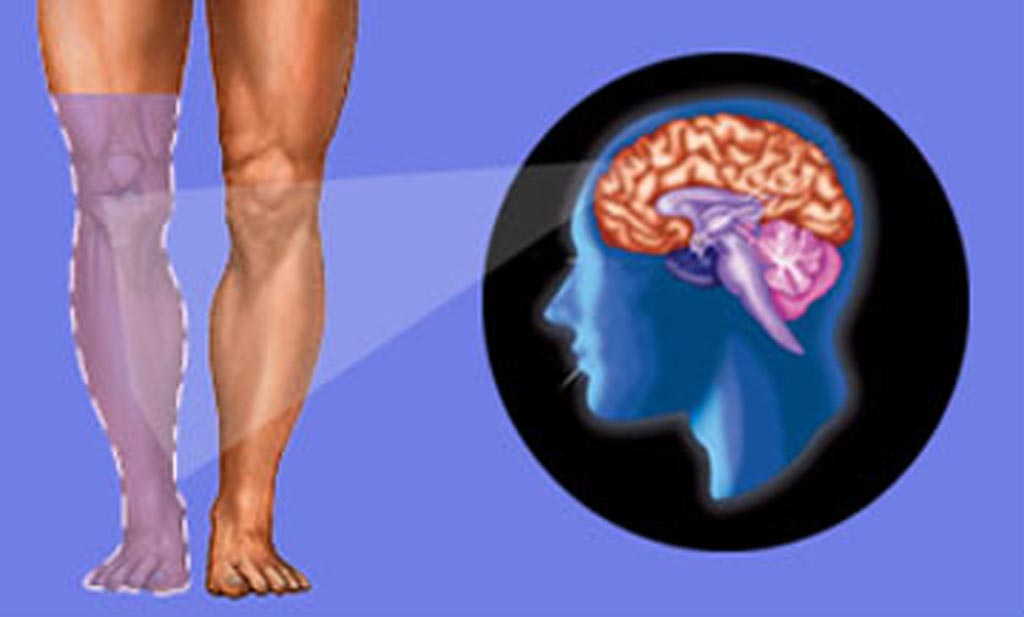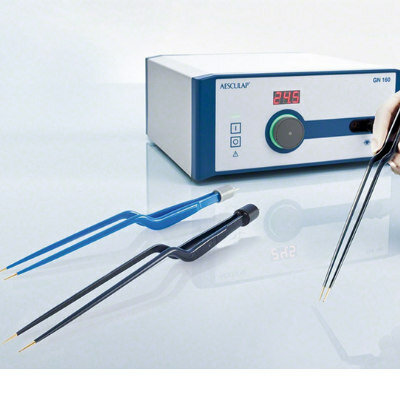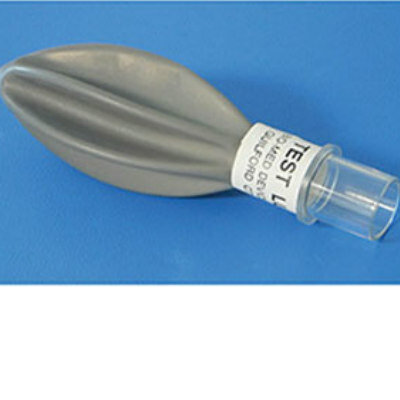Rerouting Nerves During Amputation Reduces Phantom Limb Pain
|
By HospiMedica International staff writers Posted on 09 Jan 2019 |

Image: A new study asserts that redirecting nerves severed during limb amputation can reduce phantom pain (Photo courtesy of 123rf).
A novel surgical procedure developed for advanced prosthetics can prevent or reduce debilitating phantom limb and stump pain in amputees, according to a new study.
Researchers at Ohio State University (OSU; Columbus, USA) conducted a study in 22 patients in order to evaluate the results of primary targeted muscle reinnervation (TMR) for below-the-knee amputations. The procedure involves rerouting the severed motor nerves by surgically transferring them to the motor points of the denervated target muscles, which, after reinnervation, can contract in response to neural control signals intended for the missing limb. The operation of the prosthesis thus occurs in response to attempts to move the missing limb, making control easier and more intuitive.
All subjects denied neuroma pain following amputation. Each patient was followed on an outpatient basis for one year to evaluate early symptoms of neuroma or phantom limb pain, patient satisfaction, and functionality. The researchers also found that over the course of three years, none of the patients developed symptomatic neuromas, and only 13% of those who received primary TMR reported pain six months later. In addition, by creating the additional control sites, TMR eliminated the need to switch the prosthesis between different control modes. The study was published in the January 2019 issue of Plastic and Reconstructive Surgery.
“A significant amount of pain in amputees is caused by disorganized nerve endings, i.e. symptomatic neuromas, in the residual limb. They form when nerves are severed and not addressed, thus they have nowhere to go,” said senior author Ian Valerio, MD, of the department of plastic and reconstructive surgery at OSU. “Attaching those cut nerve endings to motor nerves in a nearby muscle allows the body to re-establish its neural circuitry. This alleviates phantom and residual limb pain by giving those severed nerves somewhere to go and something to do.”
“TMR allows for more individual muscle unit firings through the patient's thoughts. It provides for better intuitive control, resulting in more refined functional movements and more degrees of motion by an advanced prosthetic,” concluded lead author J. Byers Bowen, MD, of OSU. “When done at the time of initial amputation, there is minimal health risk, and recovery is similar to that of traditional amputation surgery.”
Approximately 25% of major limb amputees will develop chronic localized symptomatic neuromas and phantom limb pain in the residual stump or limb. Previous studies show that secondary targeted reinnervation successfully treats and, in some cases, resolves peripheral neuropathy and phantom limb pain in patients who have undergone a previous amputation.
Related Links:
Ohio State University
Researchers at Ohio State University (OSU; Columbus, USA) conducted a study in 22 patients in order to evaluate the results of primary targeted muscle reinnervation (TMR) for below-the-knee amputations. The procedure involves rerouting the severed motor nerves by surgically transferring them to the motor points of the denervated target muscles, which, after reinnervation, can contract in response to neural control signals intended for the missing limb. The operation of the prosthesis thus occurs in response to attempts to move the missing limb, making control easier and more intuitive.
All subjects denied neuroma pain following amputation. Each patient was followed on an outpatient basis for one year to evaluate early symptoms of neuroma or phantom limb pain, patient satisfaction, and functionality. The researchers also found that over the course of three years, none of the patients developed symptomatic neuromas, and only 13% of those who received primary TMR reported pain six months later. In addition, by creating the additional control sites, TMR eliminated the need to switch the prosthesis between different control modes. The study was published in the January 2019 issue of Plastic and Reconstructive Surgery.
“A significant amount of pain in amputees is caused by disorganized nerve endings, i.e. symptomatic neuromas, in the residual limb. They form when nerves are severed and not addressed, thus they have nowhere to go,” said senior author Ian Valerio, MD, of the department of plastic and reconstructive surgery at OSU. “Attaching those cut nerve endings to motor nerves in a nearby muscle allows the body to re-establish its neural circuitry. This alleviates phantom and residual limb pain by giving those severed nerves somewhere to go and something to do.”
“TMR allows for more individual muscle unit firings through the patient's thoughts. It provides for better intuitive control, resulting in more refined functional movements and more degrees of motion by an advanced prosthetic,” concluded lead author J. Byers Bowen, MD, of OSU. “When done at the time of initial amputation, there is minimal health risk, and recovery is similar to that of traditional amputation surgery.”
Approximately 25% of major limb amputees will develop chronic localized symptomatic neuromas and phantom limb pain in the residual stump or limb. Previous studies show that secondary targeted reinnervation successfully treats and, in some cases, resolves peripheral neuropathy and phantom limb pain in patients who have undergone a previous amputation.
Related Links:
Ohio State University
Latest Surgical Techniques News
- Robotic Assistant Delivers Ultra-Precision Injections with Rapid Setup Times
- Minimally Invasive Endoscopic Surgery Improves Severe Stroke Outcomes
- Novel Glue Prevents Complications After Breast Cancer Surgery
- Breakthrough Brain Implant Enables Safer and More Precise Drug Delivery
- Bioadhesive Sponge Stops Uncontrolled Internal Bleeding During Surgery
- Revolutionary Nano Bone Material to Accelerate Surgery and Healing
- Superior Orthopedic Implants Combat Infections and Quicken Healing After Surgery
- Laser-Based Technique Eliminates Pancreatic Tumors While Protecting Healthy Tissue
- Surgical Treatment of Severe Carotid Artery Stenosis Benefits Blood-Brain Barrier
- Revolutionary Reusable Duodenoscope Introduces 68-Minute Sterilization
- World's First Transcatheter Smart Implant Monitors and Treats Congestion in Heart Failure
- Hybrid Endoscope Marks Breakthrough in Surgical Visualization
- Robot-Assisted Bronchoscope Diagnoses Tiniest and Hardest to Reach Lung Tumors
- Diamond-Titanium Device Paves Way for Smart Implants that Warn of Disease Progression
- 3D Printable Bio-Active Glass Could Serve as Bone Replacement Material
- Spider-Inspired Magnetic Soft Robots to Perform Minimally Invasive GI Tract Procedures
Channels
Critical Care
view channel
Wearable Patch for Early Skin Cancer Detection to Reduce Unnecessary Biopsies
Skin cancer remains one of the most dangerous and common cancers worldwide, with early detection crucial for improving survival rates. Traditional diagnostic methods—visual inspections, imaging, and biopsies—can... Read more
Pulse Oximeter Index Offers Non-Invasive Guides for Fluid Therapy
In patients with acute circulatory failure, deciding whether to administer intravenous fluids is often a life-or-death decision. Too little fluid can leave organs underperfused, while too much can cause... Read morePatient Care
view channel
Revolutionary Automatic IV-Line Flushing Device to Enhance Infusion Care
More than 80% of in-hospital patients receive intravenous (IV) therapy. Every dose of IV medicine delivered in a small volume (<250 mL) infusion bag should be followed by subsequent flushing to ensure... Read more
VR Training Tool Combats Contamination of Portable Medical Equipment
Healthcare-associated infections (HAIs) impact one in every 31 patients, cause nearly 100,000 deaths each year, and cost USD 28.4 billion in direct medical expenses. Notably, up to 75% of these infections... Read more
Portable Biosensor Platform to Reduce Hospital-Acquired Infections
Approximately 4 million patients in the European Union acquire healthcare-associated infections (HAIs) or nosocomial infections each year, with around 37,000 deaths directly resulting from these infections,... Read moreFirst-Of-Its-Kind Portable Germicidal Light Technology Disinfects High-Touch Clinical Surfaces in Seconds
Reducing healthcare-acquired infections (HAIs) remains a pressing issue within global healthcare systems. In the United States alone, 1.7 million patients contract HAIs annually, leading to approximately... Read moreHealth IT
view channel
Printable Molecule-Selective Nanoparticles Enable Mass Production of Wearable Biosensors
The future of medicine is likely to focus on the personalization of healthcare—understanding exactly what an individual requires and delivering the appropriate combination of nutrients, metabolites, and... Read moreBusiness
view channel
Philips and Masimo Partner to Advance Patient Monitoring Measurement Technologies
Royal Philips (Amsterdam, Netherlands) and Masimo (Irvine, California, USA) have renewed their multi-year strategic collaboration, combining Philips’ expertise in patient monitoring with Masimo’s noninvasive... Read more
B. Braun Acquires Digital Microsurgery Company True Digital Surgery
The high-end microsurgery market in neurosurgery, spine, and ENT is undergoing a significant transformation. Traditional analog microscopes are giving way to digital exoscopes, which provide improved visualization,... Read more
CMEF 2025 to Promote Holistic and High-Quality Development of Medical and Health Industry
The 92nd China International Medical Equipment Fair (CMEF 2025) Autumn Exhibition is scheduled to be held from September 26 to 29 at the China Import and Export Fair Complex (Canton Fair Complex) in Guangzhou.... Read more














